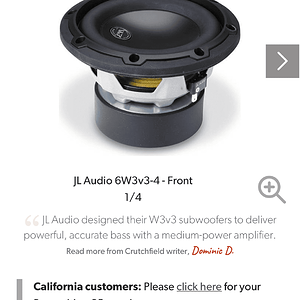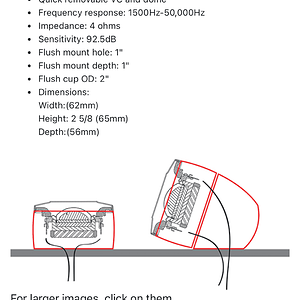I'm confused how it is acting as a tline with a chamber larger than the line width and length. Are you certain it is acting as a line? the whole point of a tline is to unload the driver and a chamber that large should be loading it quite a bit
That is actually one of the reasons why the post from surreal existed, lol. It does have a similar response to a bass-reflex, if one were to calculate the design as such. But tlines do not have to have a small compression chamber compared to the line. The concept of the design is constant, but the requested response is what gives it similar characteristics of the bass-reflex, but the designing of the compression area with the line was done of that from my tline calculations. This is why I mentioned in my rebuttle post that it would be easy to argue the fact that they are similar. Because, without showing you the actual and exact way that I design them, it would be tough to form an arugment against others known knowledge of them.
The unloading of the driver is not a characteristic of the tline-but the coupling of it to the environment is, but so happens that it becomes popular with larger area lines. It is still loaded, but yes in this design, much more than what is "popular" and noticed around the world. So, to bunk this, yes, this design alone, has many visual characteristics of a bass-reflex and gives similar frequency response curves, but the other factors are different, as far as mechanical and thermal control of the driver. When dealing with physics and acoustics, as mentioned in the rebuttle post, limitations will cause this to occur(the similarities).
Now, since coupling is important in tlines, it also depends on the vehicle characteristics, which in this case, in order to give a lower response from the center of the vehicle, where losses are evident, than a smaller area is requested by the driver. But again, the calculations are the same. There is not direct rule of the relation to the area with the compression area or surface area of the driver, other than the ones needed to figure for the entire designs characteristics. In other words, unlike quarterwave, and simple ports, the line is based from all other characteristics as well as the others are around it. So, the line area will always vary, and there is no minimal area, other than that considered for "port mach" calculations. That is the main similarity of the designs, is the need for minimizing noise. Other than that, they are in fact quite different-to a point. And again, tough to argue without showing you "how" I do it. That, I will not do, as it took me a long time and a lot of work and money to get where I am.


